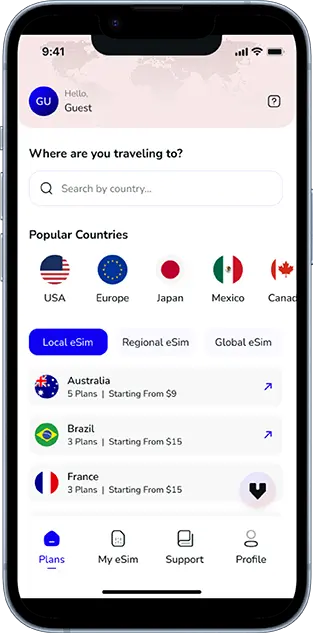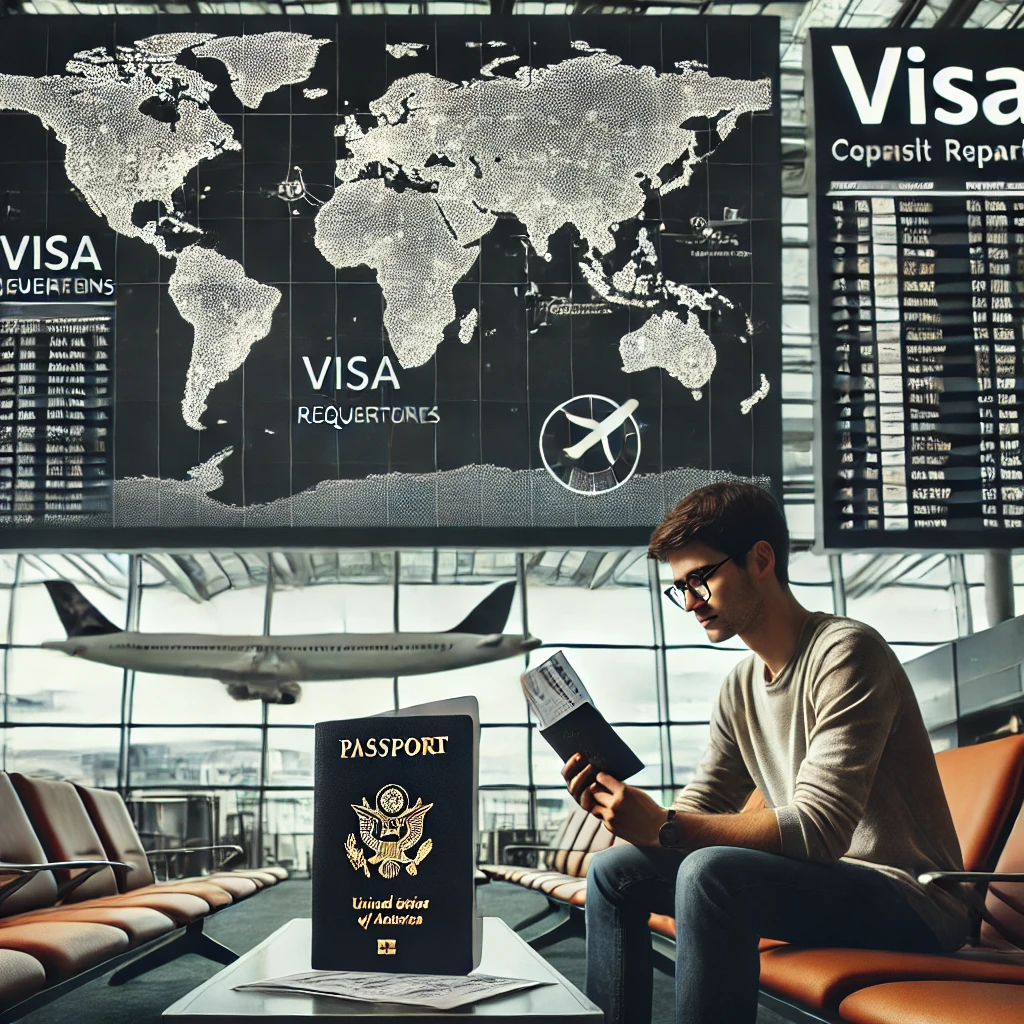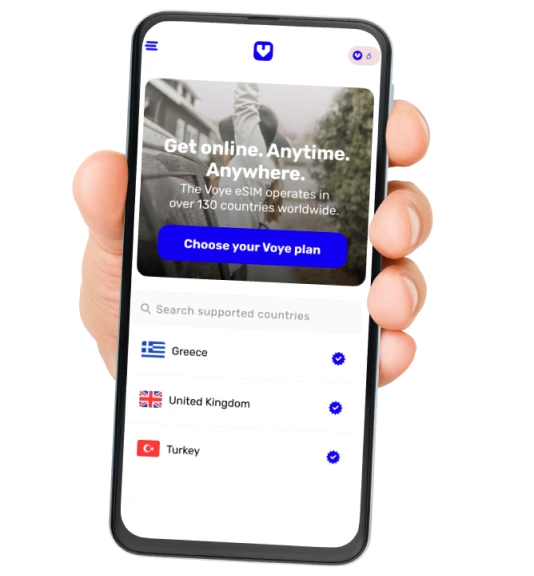Note that iPhone devices from Mainland China aren’t eSIM compatible. Also iPhone devices from Hong Kong and Macao aren’t compatible (except for iPhone 13 Mini, iPhone 12 Mini, iPhone SE 2020 and iPhone XS)
When booking international flights, you might come across layovers in different countries. One common question travelers have is: Do I need a visa for a connecting flight? The answer depends on multiple factors, such as the country of transit, duration of the layover, and whether you leave the airport transit area.
Understanding Transit Visas and Their Purpose
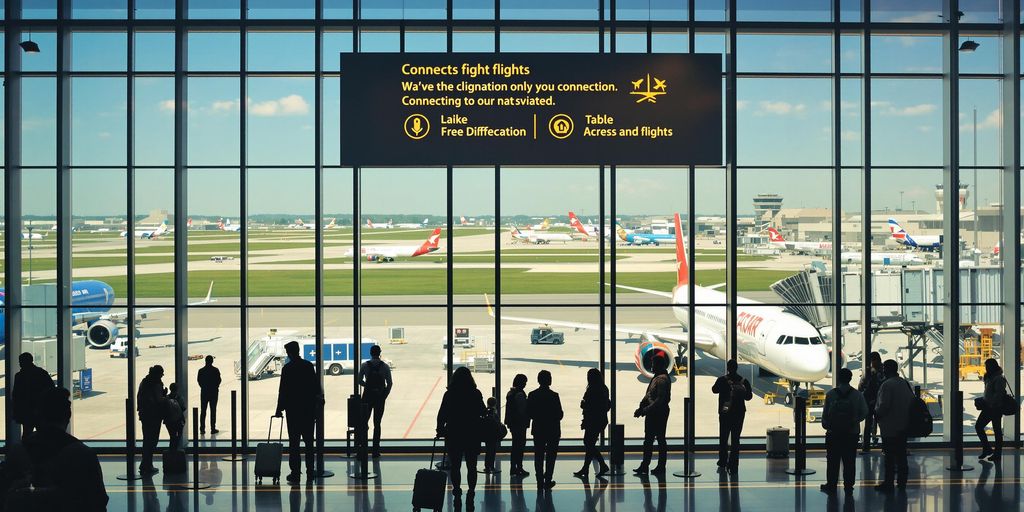
What Is a Transit Visa?
A transit visa is a short-term visa that allows travelers to pass through a country on their way to another destination. It’s not meant for sightseeing or extended stays—it’s strictly for layovers or connecting flights. Think of it as a permission slip that lets you switch planes or wait in the airport for your next flight. The validity of transit visas is usually limited to a few hours or, at most, a couple of days, depending on the country’s rules. Some countries issue single-entry transit visas, while others might offer multiple-entry options if you have a round trip with multiple stops.
Why Some Countries Require Transit Visas
Not every country requires transit visas, but when they do, it’s usually for security, immigration, or administrative reasons. Here’s why some countries enforce this rule:
- Security Concerns: Countries want to ensure that anyone entering their borders, even briefly, has been vetted.
- Immigration Control: Some nations use transit visas as a way to monitor who is passing through, especially if the traveler is from a country with stricter visa requirements.
- Revenue Generation: Let’s face it—visa fees can add up, and for some countries, this is an additional source of income.
It’s worth noting that transit visa requirements often depend on factors like your nationality, the airport you’re transiting through, and whether you’ll be leaving the airport.
Key Differences Between Transit and Tourist Visas
While both transit and tourist visas allow you to enter a country, they serve very different purposes. Here’s how they differ:
- Duration: Transit visas are typically valid for a much shorter time, often just a few hours to a couple of days. Tourist visas, on the other hand, can last weeks or even months.
- Purpose: A transit visa is strictly for passing through, while a tourist visa allows you to explore, visit attractions, or even attend events.
- Application Requirements: Transit visas usually have simpler requirements—like proof of onward travel—whereas tourist visas may require hotel bookings, detailed itineraries, and financial proof.
Understanding these differences can save you from applying for the wrong type of visa and potentially ruining your travel plans.
Your Journey, Our eSIM
Don’t let layovers disconnect you! Get a reliable eSIM and enjoy seamless internet.
Factors That Determine If You Need a Visa for Connecting Flights
Duration of Your Layover
One of the biggest factors to consider is how long you’ll be in the transit country. If your layover is short—say, just a few hours—you might not need a visa. But if your layover stretches into double digits or even overnight, some countries may require a transit visa. This is especially true if the layover exceeds a certain time limit, like 8 or 12 hours, depending on the country’s rules. Always check the specific time thresholds for the country you’re passing through.
Whether You Leave the Airport Transit Area
Staying inside the airport’s transit area usually means you won’t need a visa. But if you plan to leave the airport—even just to grab a meal or explore a nearby city—you’ll likely need one. Some airports have designated transit zones where you can stay visa-free, but stepping outside that zone changes the rules. It’s important to double-check whether your connecting airport allows you to remain in the transit area without a visa.
Specific Rules of the Transit Country
Every country has its own transit visa policies, and some are stricter than others. For instance, countries like the United States and India often require transit visas even if you’re not leaving the airport. On the other hand, some nations offer visa-free transit for travelers from certain countries. It’s a good idea to look up the specific regulations for the country you’ll be transiting through. Consulting resources like embassy guidelines or airline customer service can help clarify these rules.
Countries With Strict Transit Visa Requirements
Examples of Countries Requiring Transit Visas
Some countries are well-known for having strict transit visa policies, even for short layovers. Here are a few examples:
- Russia: If you’re passing through a Russian airport, you may need a transit visa, even if you don’t leave the airport. The rules can be particularly rigid, so it’s crucial to check in advance.
- China: While many cities offer visa-free transit for a limited time, this doesn’t apply everywhere. Some regions still enforce strict transit visa requirements depending on your nationality.
- India: India’s transit visa policies can be confusing. If your layover involves changing airports or staying for more than a few hours, you’ll likely need a transit visa.
How to Check Transit Visa Policies
Figuring out whether you need a transit visa can feel like a guessing game, but it doesn’t have to be. Here are some practical steps:
- Consult the Embassy: The embassy or consulate of the country you’re transiting through is the most reliable source of information.
- Ask Your Airline: Airlines often have up-to-date knowledge about visa requirements for transit passengers.
- Use Online Tools: Some websites and apps let you enter your travel details and check if a transit visa is required. Just make sure the tool is reputable.
Tips for Navigating Strict Transit Rules
Dealing with strict transit visa requirements doesn’t have to be a headache. Here are some tips to make things easier:
- Plan Ahead: Research the visa requirements for all countries on your route well before your trip.
- Choose Your Layover Wisely: If possible, pick layovers in countries that offer visa-free transit or don’t require a transit visa at all.
- Have Documents Ready: Keep all necessary documents like your onward ticket, visa (if required), and passport handy to avoid last-minute stress.
Strict transit visa rules can complicate travel plans, but with the right preparation, you can avoid surprises. For example, if you’re heading to Asia and want to stay connected during your trip, consider using Voye Global’s eSIM for seamless data connectivity. Staying informed and prepared is key to a smooth journey.
Visa-Free Transit: What It Means and Where It Applies
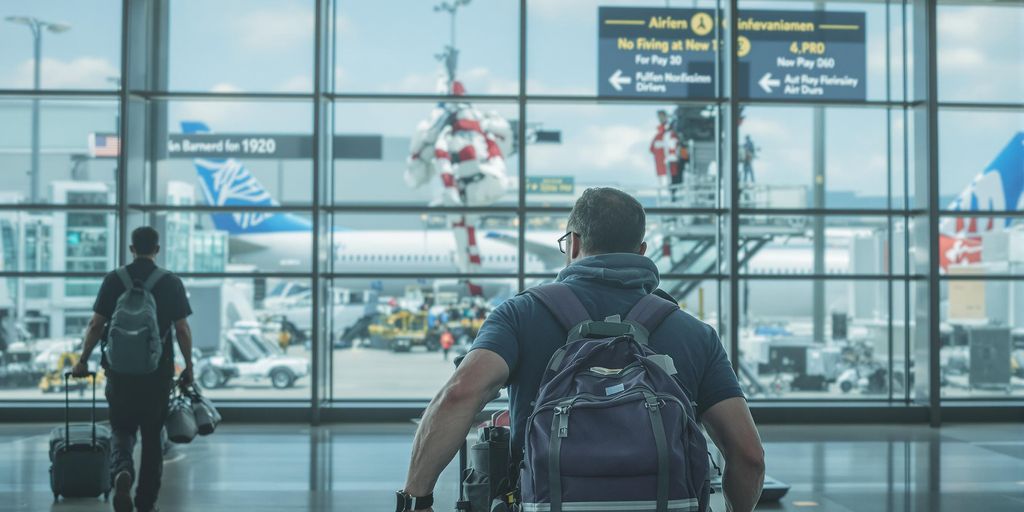
Understanding Visa-Free Transit Policies
Visa-free transit is a policy that allows travelers to pass through a country without requiring a visa, as long as they meet certain conditions. It’s like a shortcut for international layovers, letting you avoid the hassle of applying for a transit visa. However, this doesn’t mean it’s a free-for-all. Each country has specific rules about who qualifies for visa-free transit, and the criteria can vary widely. Typically, your eligibility depends on factors like your nationality, the airline you’re flying with, and the length of your layover.
For example, some countries allow visa-free transit for layovers under 24 hours, as long as you stay within the airport’s transit area. Others might require proof of onward travel, like a confirmed ticket to your next destination. It’s always a good idea to check the fine print before you book your flights.
Popular Countries Offering Visa-Free Transit
Some countries are known for their generous visa-free transit policies, making them popular choices for international layovers. Here are a few examples:
- Singapore: Offers a 96-hour visa-free transit for travelers from certain countries, provided they meet specific conditions.
- China: Allows visa-free transit for up to 144 hours in select cities, like Beijing and Shanghai, for travelers from eligible countries.
- Turkey: Provides a 24-hour visa-free transit option for passengers with tight layovers, as long as they stay within the airport.
These policies not only make travel more convenient but also encourage short visits, giving you a chance to explore the city if your layover is long enough.
Limitations of Visa-Free Transit
While visa-free transit sounds great, it does have its limitations. First, not all nationalities are eligible. Even if a country offers visa-free transit, you might not qualify based on your passport. Second, the rules can be strict. For instance, you might not be allowed to leave the airport’s transit area, or you could be required to show proof of onward travel and accommodation.
Another thing to keep in mind is that these policies can change without much notice. What worked for a friend last year might not apply to you today. Always double-check the latest requirements before you travel. And if you’re unsure, it’s better to err on the side of caution and apply for a transit visa.
How to Find Out If You Need a Transit Visa
Consulting Airline and Embassy Guidelines
Figuring out if you need a transit visa starts with checking the right sources. Airlines and embassies are usually your best bet for accurate information. Airlines often have tools or customer service representatives who can explain visa requirements for your specific route. Embassies, on the other hand, provide official and detailed guidance based on your nationality and travel plans. It’s smart to double-check with both, as rules can change and not all airlines may have up-to-date info.
Using Online Visa Check Tools
Another quick way to determine if you need a transit visa is by using online visa check tools. These tools let you input your nationality, destination, and layover country to see if a visa is required. While convenient, they’re not always 100% accurate, so treat them as a starting point rather than the final word. Always verify the results with official sources like embassies or consulates.
Common Mistakes to Avoid
When figuring out transit visa requirements, people often make a few common mistakes:
- Assuming visa-free travel applies everywhere. Just because you don’t need a visa to visit a country doesn’t mean you can transit through it without one.
- Not considering layover duration. Some countries require a transit visa even for short layovers, especially if they involve changing airports or leaving the transit area.
- Relying solely on airline information. While airlines can guide you, they’re not responsible for your visa compliance. Always confirm with official sources.
Taking these steps and avoiding these pitfalls can save you from a lot of stress and unexpected issues during your journey.
Transit Visa Application Process Simplified
Documents Required for a Transit Visa
Getting a transit visa can feel like a chore, but knowing what paperwork you need upfront makes it way easier. Here’s a quick list of the usual suspects:
- Your Passport: Make sure it’s valid for at least six months beyond your travel date. Some countries are super strict about this.
- Flight Itinerary: They’ll want proof of your connecting flights, so have your booking confirmation ready.
- Visa for Your Final Destination: If your next stop requires a visa, you’ll likely need to show that too.
- Passport Photos: Most countries ask for one or two recent photos. Double-check the size requirements because they can vary.
- Application Form: Fill out the transit visa application form for the country you’re passing through. Some offer online forms, while others still require paper ones.
Steps to Apply for a Transit Visa
Applying for a transit visa isn’t rocket science, but it does take some planning. Here’s how you can tackle it step by step:
- Check the Requirements: Start by figuring out if you even need a transit visa. Some countries don’t require one if you’re not leaving the airport.
- Gather Your Documents: Collect everything you’ll need. Missing just one thing can delay the whole process.
- Complete the Application: Fill out the form accurately. Mistakes can lead to rejection, so take your time.
- Pay the Fee: Most transit visas come with a small fee. Depending on the country, you might be able to pay online or at the embassy.
- Submit Your Application: This could mean mailing it, dropping it off at an embassy, or completing it online. Check the rules for the specific country.
- Wait for Approval: Processing times can vary, so apply early. Some countries offer expedited services, but they usually cost extra.
How Long Does It Take to Get a Transit Visa?
The waiting game for a transit visa can be short or long—it all depends on the country. Here’s a rough breakdown:
- Same-Day Processing: Some countries offer this if you apply in person, but it’s rare.
- 3–5 Business Days: This is pretty standard for most transit visas.
- Up to Two Weeks: For countries with stricter rules, you might be waiting a while.
If you’re in a rush, check if expedited processing is an option. It might cost more, but it can save you from missing your flight.
Remember, planning ahead is your best friend when it comes to transit visas. Getting everything sorted early can save you a ton of stress later.
Special Cases: Transit Visas for Schengen Area and the US
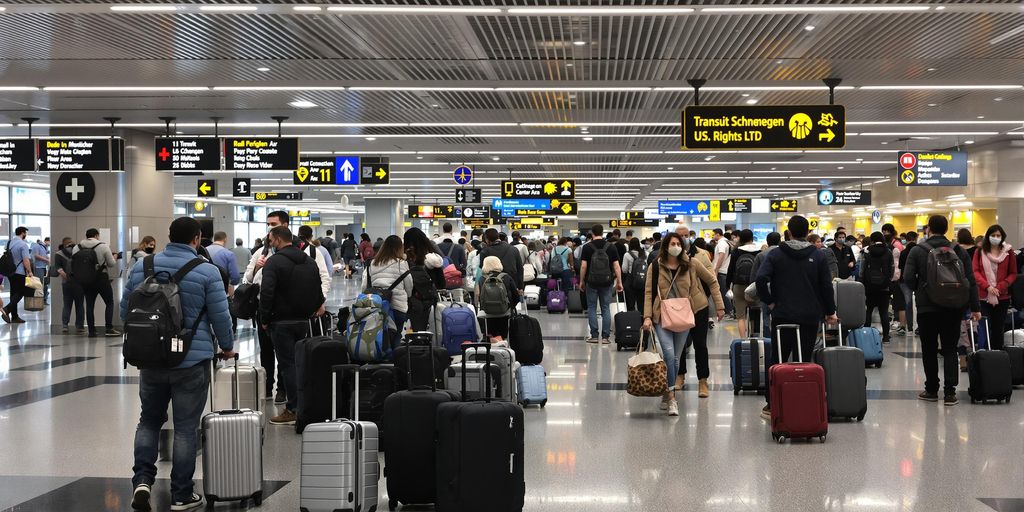
Schengen Area Transit Visa Rules
If your connecting flight takes you through a country in the Schengen Area, you might need an Airport Transit Visa (ATV). This type of visa is specifically for travelers passing through the international transit areas of airports in Schengen countries without actually entering the country. However, not everyone needs one. Generally, citizens from certain countries are required to have this visa even if they’re just passing through. To avoid surprises, always check the rules based on your nationality and travel route.
There are some exceptions to this rule. For example, if you hold a valid visa or residence permit for certain countries like the US, Canada, or Japan, you may be exempt. Similarly, if your layover is in a Schengen country that doesn’t require an ATV for your nationality, you’re in the clear. But it’s always better to double-check with the consulate or embassy of the country you’re transiting through.
US Transit Visa Requirements
For layovers in the United States, things can get a bit complicated. The US requires almost all travelers to have a visa, even if they’re only passing through. If you’re not eligible for the Visa Waiver Program (VWP), you’ll need a C-1 Transit Visa. This visa allows you to stop in the US for up to 29 days as long as you don’t leave the immediate transit area or engage in tourism.
Travelers eligible for the VWP can transit without a visa, but only if they meet all the program’s requirements, like holding an ESTA (Electronic System for Travel Authorization) approval. If you’re unsure, it’s a good idea to consult your airline or the US embassy to clarify your situation.
Exceptions and Exemptions
Both the Schengen Area and the US have specific exemptions that might work in your favor. For instance:
- Schengen Area: If you’re traveling with a diplomatic passport or you’re a family member of an EU citizen, you might not need a transit visa.
- United States: Green card holders or those with a valid visa for the US don’t need additional transit documentation.
- Special Cases: Some countries have bilateral agreements that waive transit visa requirements for their citizens.
These exemptions can save you time and effort, but they’re not automatic. Always verify your eligibility before your trip to avoid any last-minute headaches.
Global Coverage, Local Rates
Experience hassle-free connectivity wherever you go.
What Happens If You Don’t Have the Right Transit Visa?
Consequences of Missing a Transit Visa
Not having the correct transit visa can lead to a range of problems, and none of them are pleasant. For starters, you might be denied boarding at your departure airport. Airlines are responsible for ensuring passengers have the necessary documentation, and if they notice you’re missing a required transit visa, they’ll likely stop you from getting on the plane.
If you somehow make it to your layover country without the right visa, things can escalate quickly. Immigration authorities could detain you at the airport, and in some cases, you may even be deported back to your original location. This is not only stressful but can also be expensive. And let’s not forget the time wasted—it could ruin your entire travel plan.
How Airlines Handle Visa Issues
Airlines take visa requirements very seriously because they face hefty fines if they transport a passenger without proper documentation. If you’re caught without the right transit visa, the airline may rebook you on a flight back to where you came from. Some airlines might offer assistance in sorting out your visa situation, but this is rare and usually depends on the airline’s policies and the specific circumstances.
In some cases, you may have to pay additional fees for rebooking or other administrative costs. And don’t expect the airline to cover these—they’ll likely fall on you. This is why it’s crucial to double-check your visa requirements before traveling.
Emergency Solutions for Transit Visa Problems
If you find yourself stuck in a transit country without the right visa, there are a few things you can try. First, talk to the immigration officers—they might issue you a temporary or emergency visa, though this isn’t guaranteed and depends on the country’s policies. Be prepared to explain your situation clearly and provide any supporting documents, like proof of your onward travel.
Another option is to contact your airline for help. While they’re not obligated to assist, some airlines might help you explore solutions, such as rebooking your flight through a different route that doesn’t require a transit visa.
Lastly, you can reach out to your country’s embassy or consulate in the transit country. They may provide guidance or assistance, though this is usually a last resort and can take time. To avoid these headaches, it’s always better to research and prepare in advance.
Tips for Hassle-Free International Layovers
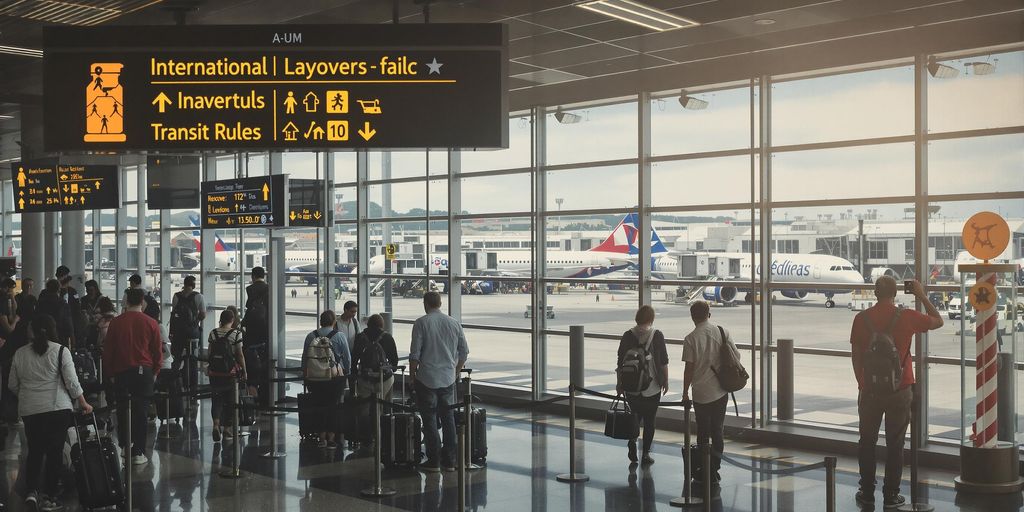
Planning Your Layover Wisely
When booking flights, take a moment to think about the layover duration. Too short, and you might stress about missing your next flight. Too long, and you could end up bored out of your mind. Aim for a sweet spot—generally 2 to 4 hours is a good range for most international connections. If you’re flying through a massive airport, like Dubai or Frankfurt, a little extra time won’t hurt.
Also, consider the time of day. Late-night layovers can be tricky since many airport amenities close after hours. Research the airport beforehand to know what will be open when you’re there.
Choosing Airports With Relaxed Transit Policies
Not all airports are created equal. Some have stricter rules about visa requirements, even if you’re just passing through. For example, in some countries, you’ll need a transit visa just to switch terminals. Before booking, check if the airport allows visa-free transit for your nationality. Airports in hubs like Singapore, Doha, and Istanbul are known for being transit-friendly and even offer perks like free city tours if you have a longer layover.
If you’re traveling with kids or have mobility issues, pick airports with good facilities. Family-friendly airports often have play areas, while others might have lounges or even nap pods for a quick rest.
Staying Informed About Visa Changes
Visa rules can change faster than you’d expect. What was a visa-free transit policy last year might not be the same today. Before your trip, double-check the transit visa requirements for your layover country. Your airline’s website or customer service can be helpful, but don’t rely on them entirely. Embassies or official government websites are your safest bet for accurate info.
If you’re unsure, consider using an online visa checker tool. These can give you a good idea of what’s required based on your nationality and travel plans. Just remember, they’re not foolproof, so always confirm with an official source.
By planning ahead, picking the right airports, and staying updated on visa rules, you can turn a potentially stressful layover into a smooth, even enjoyable, part of your journey.
The Role of Airlines in Transit Visa Guidance
How Airlines Assist With Visa Information
Airlines often serve as the first point of contact when you’re trying to figure out if you need a transit visa. They have access to detailed databases about visa and entry requirements for different countries. When you book a ticket, airlines usually check your travel itinerary and flag any potential visa issues. Some airlines even send out reminders or notifications if they notice something missing in your documentation.
Additionally, airline staff at the check-in counter or customer service can provide guidance on what kind of visas you might need. For example, they might inform you about the rules for countries with strict transit visa policies. While they can’t apply for the visa for you, their insights can save you from a lot of last-minute stress.
Limitations of Airline Support
That said, airlines aren’t foolproof when it comes to visa advice. Their systems might not always have the latest updates on visa policies, especially if those policies change frequently. Plus, the information they provide is often generalized and may not take into account specific details about your citizenship or travel plans.
Another limitation is that airline staff are not immigration experts. Their primary role is to ensure you meet the basic requirements to board the flight. This means they might miss nuanced rules or exceptions that apply to your situation. Relying solely on airline information could lead to unexpected problems during your journey.
Why You Should Double-Check Airline Advice
It’s always a good idea to verify any visa-related information you get from an airline. Start by checking the official websites of embassies or consulates for the countries you’re transiting through. These sources will have the most accurate and up-to-date details.
You can also use online visa-check tools, which are usually more specific and tailored to your nationality and travel route. If you’re still unsure, consulting an immigration lawyer or reaching out directly to the embassy can provide clarity.
In summary, while airlines can be a helpful resource for transit visa guidance, they shouldn’t be your only source of information. Double-checking their advice can save you from potential travel disruptions and ensure a smoother journey.
Understanding Airport Transit Areas and Their Rules
What Is an Airport Transit Area?
An airport transit area is essentially a secure zone within an airport where passengers can wait for their connecting flights without officially entering the country. Think of it as a limbo space—you’re not quite in the country, but you’re not entirely out of it either. These areas are designed to keep international travelers moving efficiently, especially when they don’t need to go through customs or immigration. For many people, this means a quicker layover process and fewer hassles. But, it’s not as straightforward as it sounds. The rules for transit areas vary by country and airport, so knowing what to expect is key.
Rules for Staying in the Transit Area
While staying in the transit area might seem simple, there are rules to follow. Breaking these can lead to complications, so it’s good to be aware:
- No Exiting Without Permission: You typically can’t leave the transit area unless you have a visa that allows entry into the country.
- Time Limits: Some airports have strict time limits for how long you can stay in the transit zone. Check your layover duration to ensure you’ll be within the allowed timeframe.
- Restricted Activities: Certain activities, like sleeping in unauthorized areas or taking photos in restricted zones, might be prohibited. Always follow the airport’s posted signs and guidelines.
When You Might Need to Exit the Transit Area
There are situations where you might be required to leave the transit area, even if you didn’t plan to:
- Switching Airlines: If your connecting flight is with a different airline that doesn’t have an agreement with your initial carrier, you may need to retrieve your luggage and check in again.
- Overnight Layovers: Some airports close their transit areas overnight, forcing passengers to go through immigration and customs.
- Visa Requirements: Certain countries require even transit passengers to have a visa, depending on their nationality or the length of the layover.
If you find yourself needing to exit the transit area, plan ahead. Research visa requirements and know what documents you might need. Staying informed can save you from unexpected stress during your journey.
By understanding how transit areas work and what rules apply, you can make your layover experience smoother and avoid unnecessary complications. And don’t forget—staying connected during your travels is just as important. Consider using eSIM technology to ensure reliable data access while you’re on the go.
Your Journey, Our eSIM
Stay online abroad with instant activation.
Wrapping It Up
So, do you need a visa for a connecting flight? Well, it really depends. Some countries let you pass through without one, while others have stricter rules. It’s always a good idea to check the transit requirements for your specific destination ahead of time. A little planning can save you a lot of hassle at the airport. And hey, if you’re traveling internationally, staying connected is just as important. Companies like Voye Global make it easy to stay online without breaking the bank. Whether it’s checking transit rules or keeping in touch with loved ones, being prepared makes all the difference. Safe travels!
Frequently Asked Questions
Do I always need a visa for connecting flights?
No, not always. Whether you need a visa depends on the country you’re transiting through, the length of your layover, and if you plan to leave the airport’s transit area.
What is a transit visa, and why is it needed?
A transit visa is a temporary visa that allows you to pass through a country while traveling to another destination. Some countries require it to ensure travelers meet their entry requirements, even if they are just passing through.
How can I find out if I need a transit visa?
You can check with your airline, visit the embassy website of the country you’re transiting through, or use online visa-check tools to confirm transit visa requirements.
Which countries have strict transit visa rules?
Countries like the United States, Russia, and China often have stricter transit visa requirements. Always check the specific rules for your transit country before traveling.
What happens if I don’t have the right transit visa?
If you don’t have the correct visa, you may be denied boarding, stopped at the transit airport, or even sent back to your departure country. It’s essential to ensure you meet all visa requirements.
Are there any countries that offer visa-free transit?
Yes, some countries provide visa-free transit for short layovers. For example, Singapore and Qatar allow certain travelers to transit without a visa under specific conditions.
How long does it take to get a transit visa?
The processing time for a transit visa varies by country. It can take anywhere from a few days to a few weeks, so it’s best to apply well in advance of your travel date.
Can airlines help me with transit visa information?
Yes, airlines can provide general guidance, but it’s always a good idea to double-check with official embassy sources to avoid any mistakes.
Seamless Mobile Data Everywhere
